Canaries and Weavers: The Flemish Strangers in Norwich
All over the world, migration stories have been featured prominently in the news in recent years. They often focus on negative aspects of migration, but in most cases there are both challenges and opportunities for migrants and the host country. In the coming weeks we will be bringing you stories about large groups of people who left the Low Countries for other parts of the world. We start with the skilled Flemish workers who were able to build a new life in England.
In the eleventh century Flemish migrants left for England to escape large-scale flooding in Flanders. In the late Middle Ages, many of the ‘wool churches’ in the East of England, so called because they were financed by profits from the wool trade, were constructed with the help of skilled artisans from the Low Countries. In the sixteenth and seventeenth centuries, in the wake of the Protestant Reformation, thousands of Calvinists fled to England, particularly after the Beeldenstorm (Iconoclastic Fury) of 1566. While many settled in London, others moved to Norwich, the county town of Norfolk, which had a strong claim to be called England’s second city after London during the early modern period.
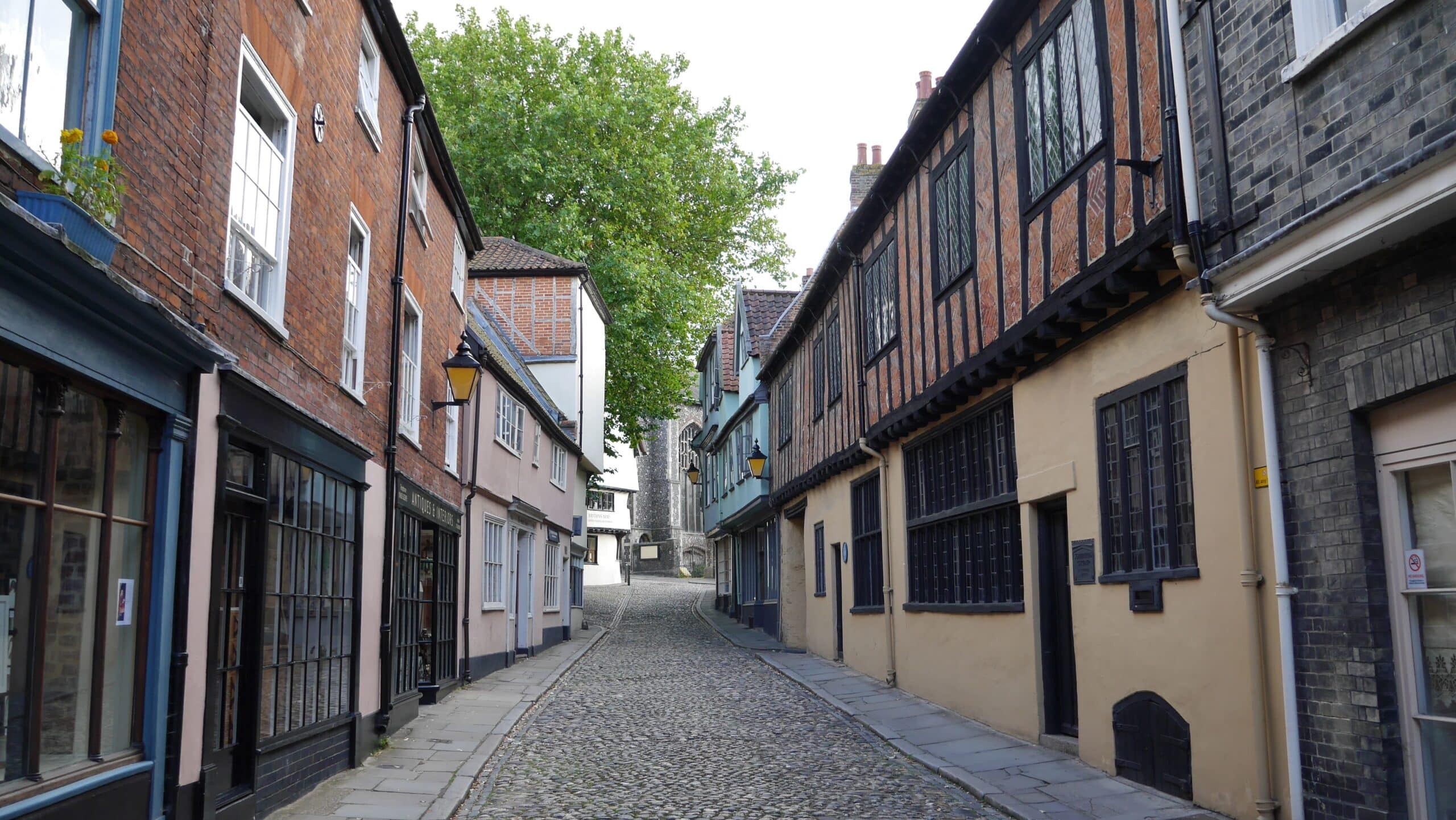 Historic Elm Hill in the old town, Norwich
Historic Elm Hill in the old town, Norwich© Tom Christiaens
New home
Norwich had suffered much economic hardship in the years after Kett’s Rebellion against land enclosures in 1549. A harsh winter in 1564-5 added to the city’s distressed state. Local leaders, notably the Duke of Norfolk and the Mayor, Thomas Sotherton, realized that the economy of the city could be improved by inviting skilled textile workers from the Spanish Netherlands. In response, Queen Elizabeth authorized ‘30 Dutch masters’ to settle in the city along with their households not exceeding ten members. However, events quickly overtook them as the arrival of the Duke of Alva in the Low Countries in the wake of the Beeldenstorm
put many Calvinists in a life-and-death situation.
 Queen Elizabeth meets the Strangers in Norwich in 1578
Queen Elizabeth meets the Strangers in Norwich in 1578Large numbers left Flanders, often taking a boat from Nieuwpoort to Great Yarmouth and then onto Norwich. By 1568 there were well over a thousand Flemish and Dutch in Norwich, known locally as Strangers, many of them from Ieper in West Flanders. They wrote letters to friends and family they had left behind sending news of their new home. From one letter, written by the anonymous Typer (Te Ieper), we can deduce that the author rented rooms in the house owned by Thomas Sotherton, which is now a museum called Strangers’ Hall. Another correspondent, Clais van Wervekin, tells his wife that the English were well disposed to the incomers and that if she were to come to Norwich, she would never think of returning to Flanders. There was the occasional grumble. Van Wervekin told his wife to bring two wooden dishes to make butter as the English only ate pig fat. However, overall the view of their new home was positive.
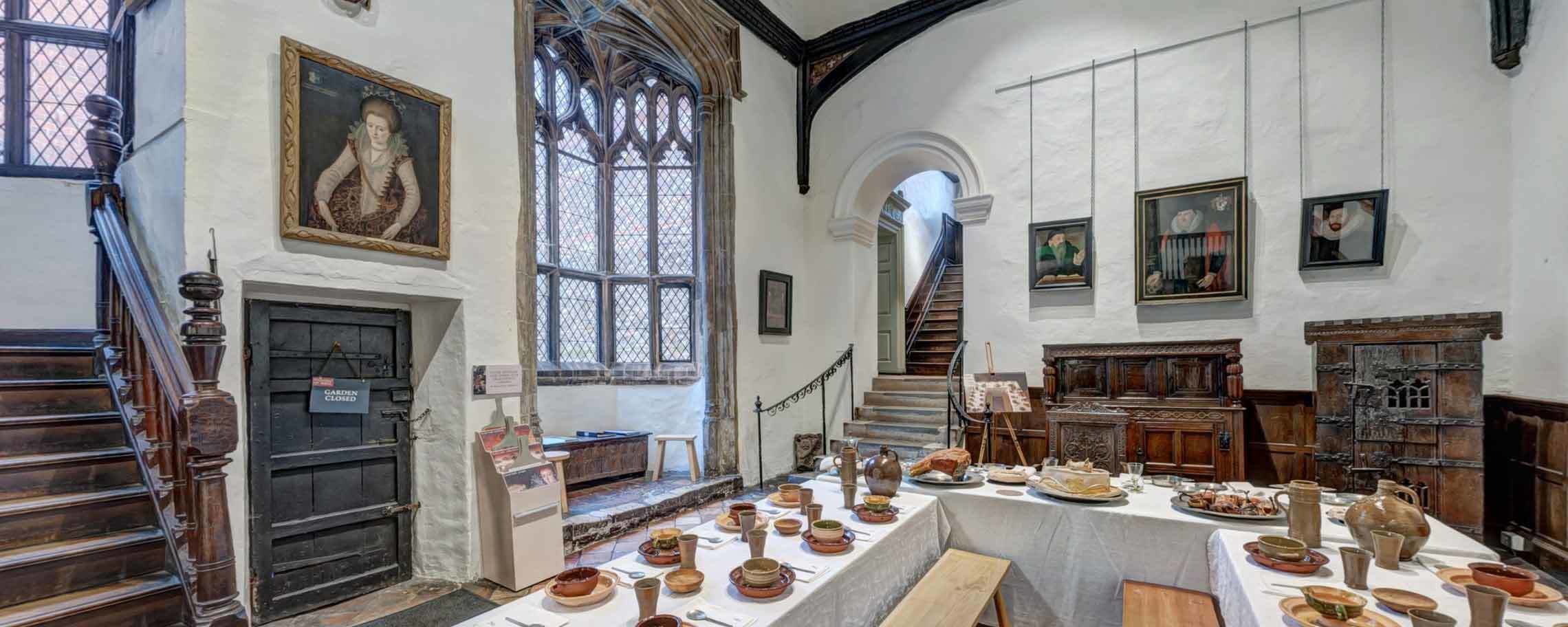 Inside Strangers' Hall
Inside Strangers' HallBrabanders, too, arrived in Norwich. One was Walter Gruter from Antwerp. He arrived in 1567 with his family including his son Jan, then aged 7. Jan received a good education from the physician, Matthias de Rijcke, before leaving Norwich to study at Cambridge. He subsequently studied at Leiden before eventually becoming Professor of History at Heidelberg University.
Revived prosperity
Another Brabander who sought refuge in Norwich was Anthonie de Solempne. He had worked in Antwerp as a merchant, but after arriving in Norwich, he operated a printing press in the town between 1568 and 1570, probably with the help of a typesetter from Holland, Albert Christiaenszoon. Solempne printed books for use by the Dutch Calvinist church in Norwich, including a Dutch psalter and a confession of faith. Ironically, one of Solempne’s English publications was a poem by Thomas Brooke. He had tried to stage an uprising to drive the Dutch and Flemish migrants out of Norwich, but had been foiled and was awaiting execution when he wrote the poem.
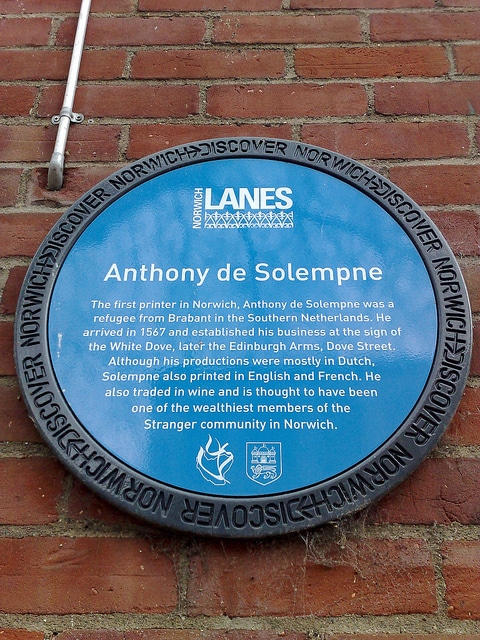 A blue plaque commemorating Solempne in Norwich
A blue plaque commemorating Solempne in Norwich© Christopher Joby
Clearly, there were tensions in the town as a result of the sudden increase in incomers. But many saw the benefits. A good number of the incomers were skilled weavers. They introduced new types of fabric, which helped Norwich to recover its prosperity. They taught their skills to local people and employed some as apprentices, again contributing to the local economy. Possibly the most majestic mark of the weavers’ skills still hangs in the church of St Peter Mancroft; a beautiful tapestry, into which the date 1573 is woven. It is likely that this was the Easter Day altar frontal made by weavers from the Low Countries who resided in the parish, perhaps as a way of saying thank you to their English hosts.
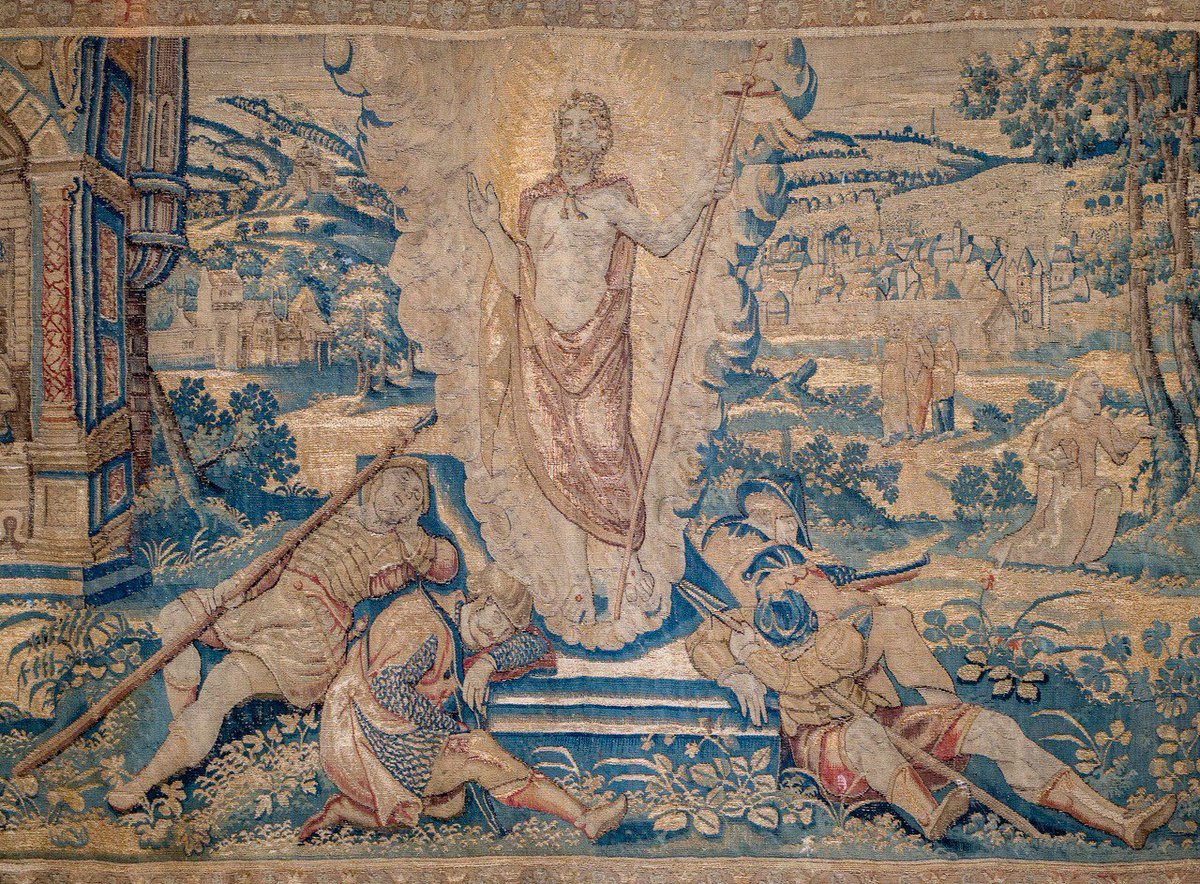 Tapestry of 1573 - possibly once the Easter Day altar frontal - woven in the parish by refugee Flemish weavers. The scene depicts the resurrection appearances of Christ.
Tapestry of 1573 - possibly once the Easter Day altar frontal - woven in the parish by refugee Flemish weavers. The scene depicts the resurrection appearances of Christ.John Cruso, a Norwich Dutch Stranger
One good example of this is John Cruso, born in Norwich in 1592. He was the son of incomers from Hondschoote, now in French Flanders. John’s father, Jan, was a cloth merchant, who became a church elder and militia man in his adopted home of Norwich. John was educated at the local grammar school, but as the eldest son he was required to take over the family cloth business, while his younger brother, Aquila, studied at Cambridge University.
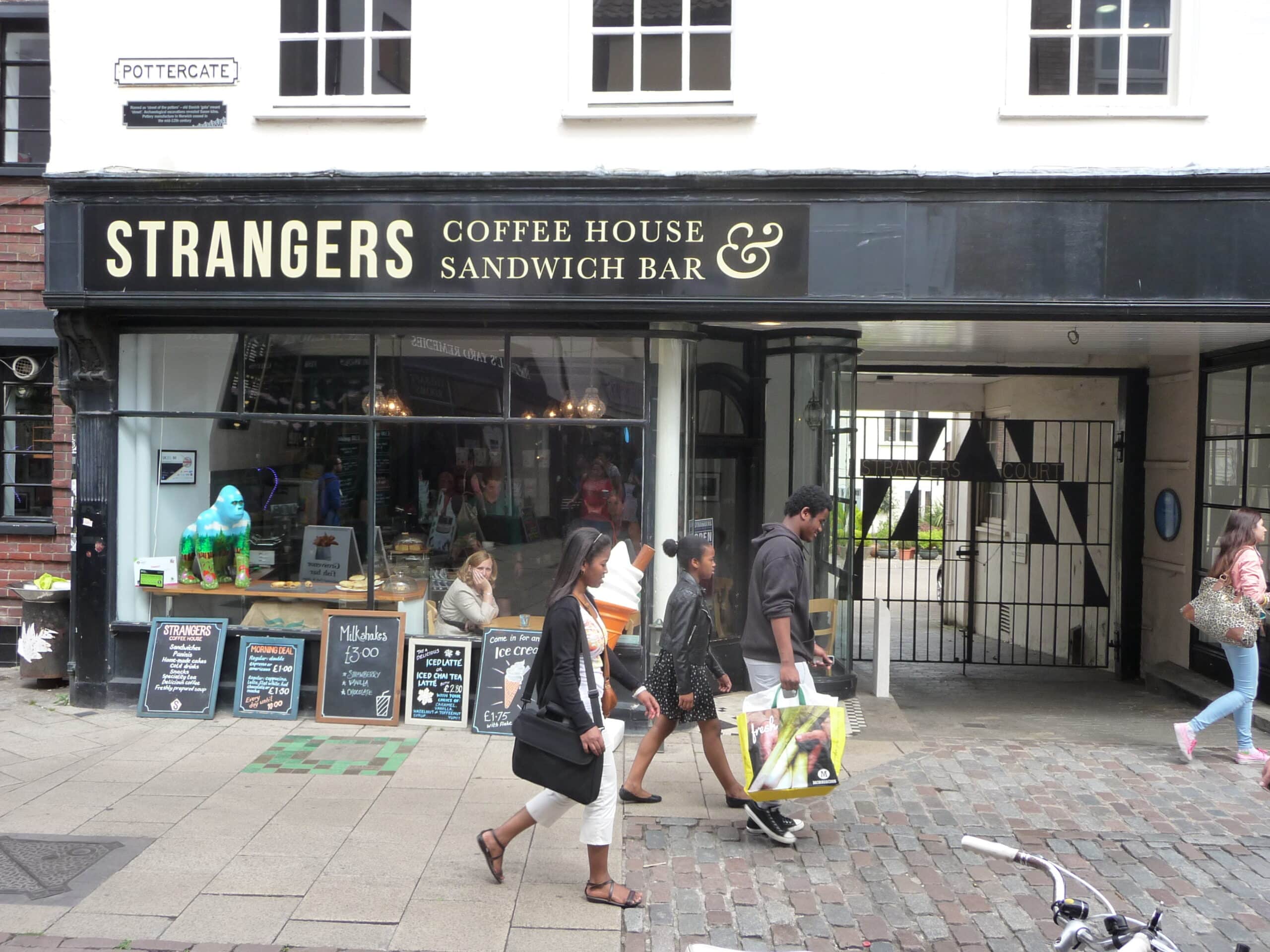 Many places in Norwich refer to the city's migration past.
Many places in Norwich refer to the city's migration past.© Tom Christiaens
After the start of the Eighty Years’ War and the Union of Utrecht (1579), many Calvinists returned to the Low Countries, but to the Northern rather than the Southern provinces. Others, though, remained, and made England their new home. They often had to negotiate between two cultures, the donor culture of their Low Countries heritage and the recipient culture of their new home.
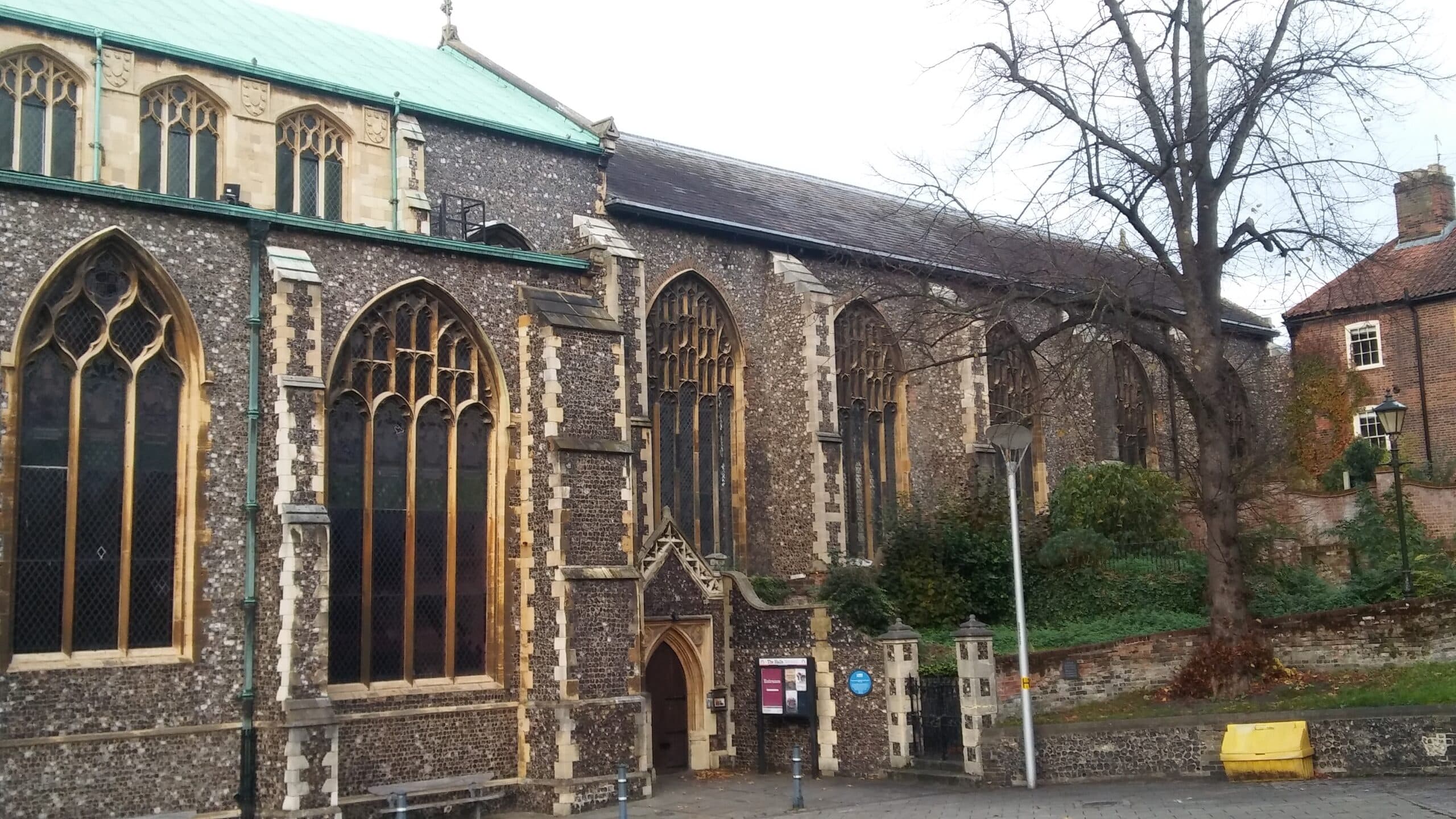 The Dutch met for worship in Blackfriars’ Hall
The Dutch met for worship in Blackfriars’ HallJohn was clearly a successful merchant as he eventually owned one of the most expensive houses in Norwich. Like his father he became a church elder, working for many years alongside the minister, Johannes Elison, whose portrait was painted by Rembrandt in 1634, and whose monument can still be seen today in Blackfriars’ Hall, where the Dutch church met for worship. John Cruso’s son, John II, studied, like his uncle Aquila, at Cambridge, and would become a noted Anglican priest.
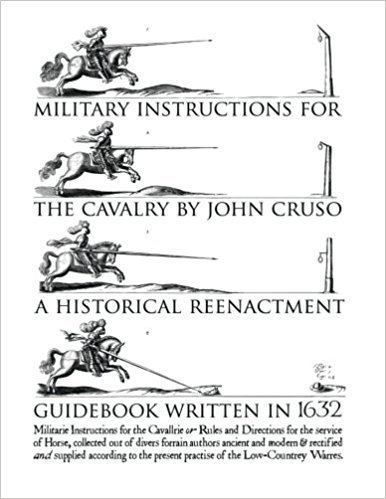 Military Instructions for the Cavalry by John Cruso
Military Instructions for the Cavalry by John CrusoFurthermore, this busy man was captain of the Norwich Dutch militia. He used this experience to write and publish important books on military matters in English, which would be used during the English Civil War. John also translated military books from French to English, acting in some sense as a cultural go-between. Finally, John published Dutch verse. This comprised elegies, including one to Johannes Elison, a long meditation on Psalm 8 and 221 Dutch epigrams. Writing this verse helped John to keep in touch with his Flemish heritage while living and working in England, and he is a good example of how migrants from any age can engage with both the culture of their heritage and that of their adopted country.
Mention of the name Cruso may ring a bell. John’s great nephew, Timothy, attended the same London academy as Daniel Defoe, who used his classmate’s surname for his hero, Robinson Crusoe. In something of a parallel, Robinson, just like John, was forced to adapt to his new life on an island away from the country of his heritage.
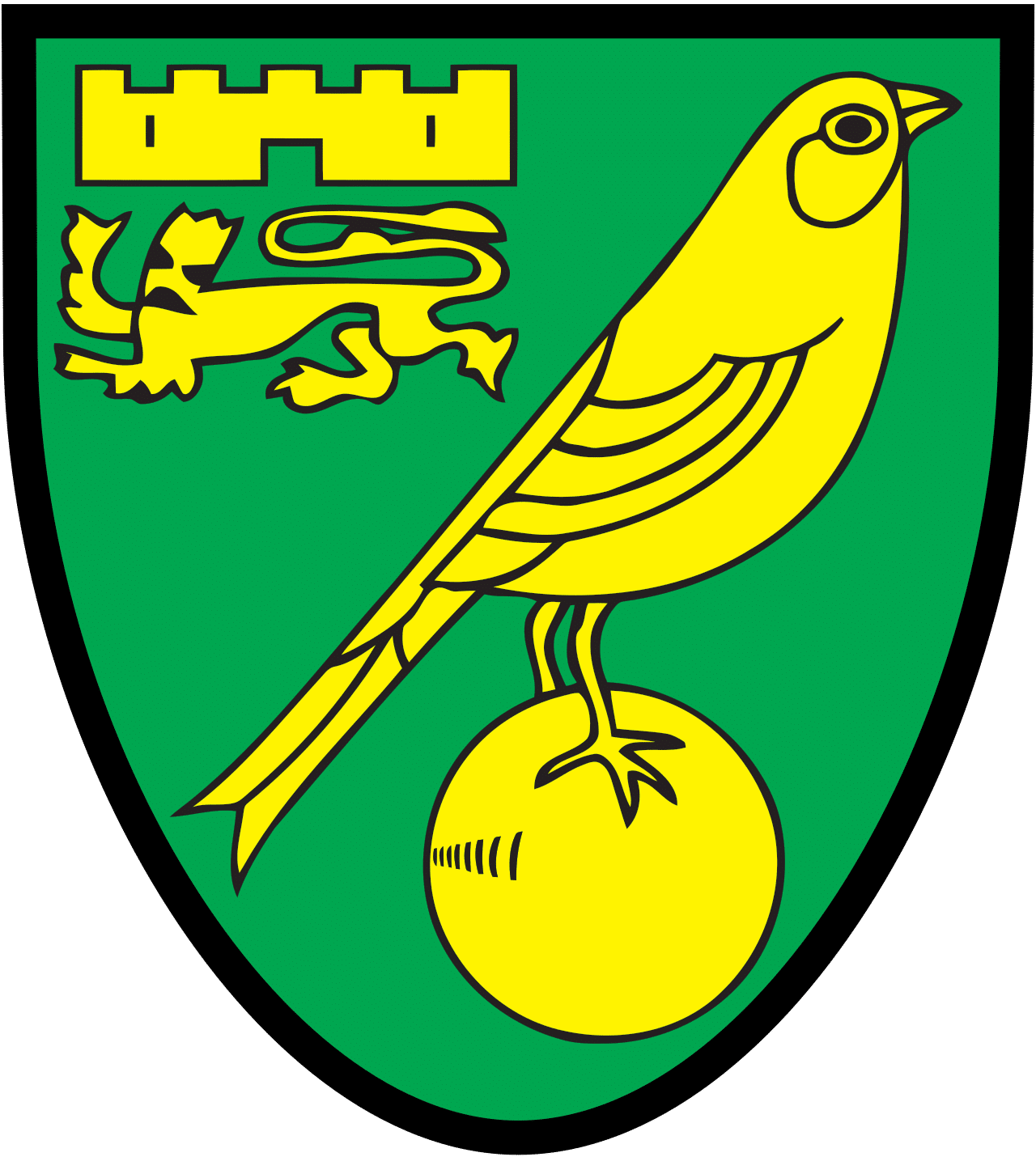 Badge of Norwich City Football Club (also known as The Canaries or City)
Badge of Norwich City Football Club (also known as The Canaries or City)In Norwich today, squares are called ‘plains’. This may well be borrowed from the Dutch plein. And we should not forget the local football club, Norwich City. Their nickname is the Canaries. This derives, it is thought, from the habit of local people of keeping canaries, which they adopted from the Dutch Strangers. These are just two of the reminders of the presence of many thousands of Dutch and Flemish Strangers in early modern Norwich who contributed to the town’s cultural life and economic prosperity.












